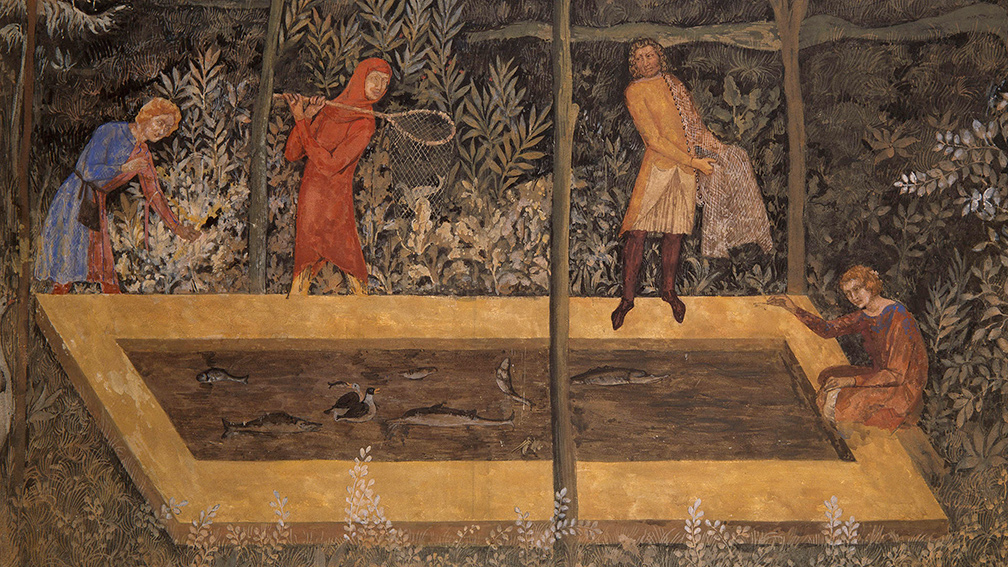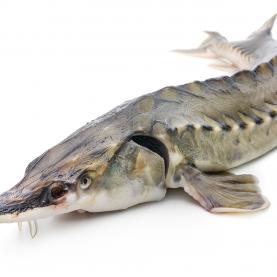The history of aquaculture
Aquaculture consists in farming aquatic organisms. Around 500 BCE, the Romans farmed oysters and fish in Mediterranean lagoons, whereas freshwater aquaculture developed empirically some 1000 years earlier in China. Farming carp in ponds led to the complete domestication of this species in the Middle Ages, which is also when mussel farming began, following a technique that remained largely unchanged until the 20th century.
Farming in ponds through the ages
The earliest evidence of fish farming dates back to before 1000 BCE in China. The Zhou dynasty (1112-221 BCE), then the politician Fan Li, around 500 BCE, were the first to describe carp, a symbol of good luck and fortune, as being farmed for food. During the Tang dynasty, around 618, the Emperor Li, whose name means ‘carp’, forbade farming the fish that bore his name. Farmers then turned their attention to similar fish in the Cyprinidae family and developed the first form of polyculture. Liquid manure from livestock farming was also used to stimulate algae growth in ponds and make it more nutritious. The pond beds were then drained so that they in turn were also used as fertiliser. The first integrated agriculture-aquaculture systems emerged in China, where they are still implemented today.
In Europe, aquaculture first began in Ancient Rome. The Romans, who loved sea fish and oysters, created oyster farms and adopted the Assyrian vivarium, a kind of ‘swimming pool’ where fish and crustaceans caught in lagoons were kept alive until it was time to eat them. These vivaria were built inside wealthier homes, where guests could choose the fish they wished to eat.
In the Middle Ages, throughout feudal Europe, the monastic orders and the aristocracy were the main users of freshwater fish vivaria, since they had a monopoly over the land, forests and water courses. Mussel farming was invented in the 13th century and the technique remained largely unchanged until the 1960s. As with hunting, poaching was severely punished and the less well-off would have to wait a few centuries before fresh fish was served on their plates.
Freshwater fish farming was further developed during the Renaissance. Several treatises were published, providing details on pond construction and management techniques, the choice of species to farm, their diseases and their diet. Carp dominated the artificial ponds of Eastern Europe. Emperor Charles IV ordered many such ponds to be built in Bohemia, what is now the westernmost region of the Czech Republic.
Artificial breeding was discovered in Germany during the Enlightenment, but it was not until the 19th century, an era of rapid industrialisation, that anyone paid much attention to it. In a hundred years, industry changed the European landscape. Pollution caused fish populations to diminish and dams and irrigation canals obstructed the migratory paths of some species, such as salmon. To combat this dramatic decline, artificial breeding research focused on trout farming, and researchers managed to master all stages of the process, from fertilisation to egg storage and transportation, pond farming and releasing fish into the wild. Hatcheries appeared all over the West and, in the 1860s, trout and other salmonids colonised rivers around the world, in the United States, India, New Zealand and even Japan, one of the first producers of edible seaweed.
During the first five decades of the 20th century, colonists introduced and then farmed other species of fish in the Anglo-Belgian colonies in Africa, whether forleisure fishing , to prevent the spread of malaria (using insect-eating species), or as a food source (tilapia for example). In the kibbutzim of Israel, farmers adapted traditional methods imported from Eastern Europe to the arid environment and developed new techniques, enabling them to achieve self-sufficiency in fish products.
In the late 1950s, the invention of artificial granulated food revolutionised fish farming, which until then had relied on products from agriculture and livestock farming (raw meat, for example), to feed the fish.
During the 1970s, marine species aquaculture enjoyed a revival, thanks to new, lighter, more hard-wearing and less expensive building materials (fibre glass, plastic tubes) and the use of floating cages rather than expensive glass and cast iron saltwater ponds. However, these new facilities turned out to be commercially non-viable and the optimisation and stabilisation of marine fish production was a major concern in the following decade. The start of the 21st century saw aquaculture take on great importance worldwide. According to a report on fishing and aquaculture by the Food and Agriculture Organization of the United Nations (FAO) in 2016, “In terms of global production volume, that of farmed fish and aquatic plants combined surpassed that of capture fisheries in 2013”.








